a good reference:
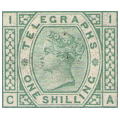
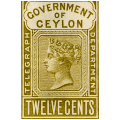
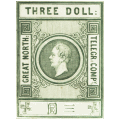

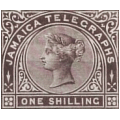
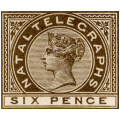
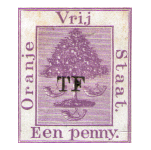
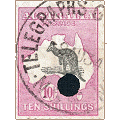
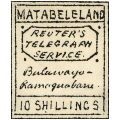
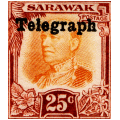
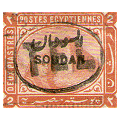
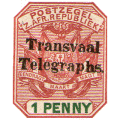
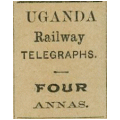
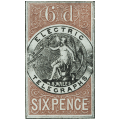
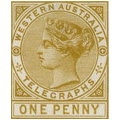
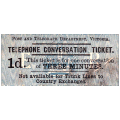
| Up a level | Not my site, but a good reference: |
||||||
 |
 |
 |
 |
 |
 |
 |
 |
| GB | Ceylon | Hong Kong | India | Jamaica | Natal | OFS | Australia and states |
| Up a level | by Dave Elsmore. | ||||||
 |
 |
 |
 |
 |
 |
 |
 |
| Other Africa | Sarawak | Sudan | Transvaal | Uganda | New South Wales | Western Australia | Other Australia |
I have brought these prices up to date and added currency selection. CheckList Setup |
Steve Hiscocks wrote:
The earliest known date for Telegraph stamps used on the Suakin Expedition is now 19/3/85
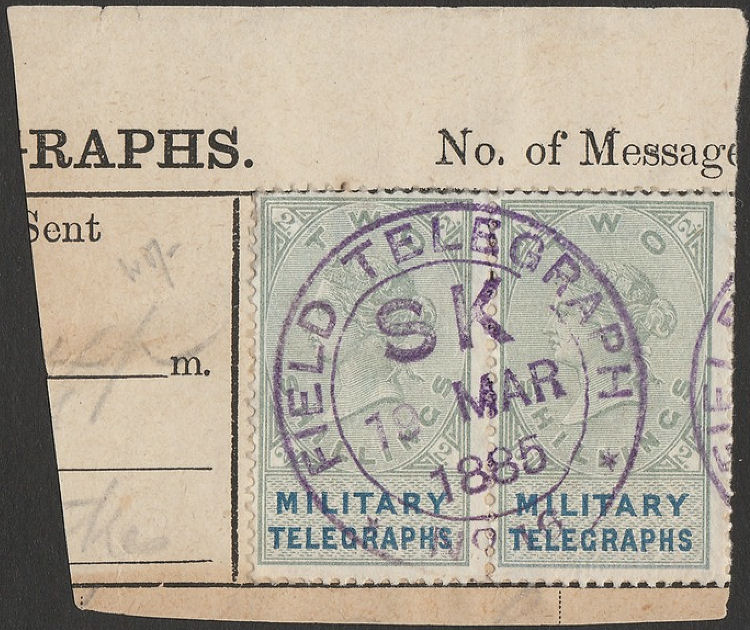
This pair courtesy of Dr. David Sher.
Hiscocks illustrates this and gives a list of telegraph codes for offices.
| Sudan 20.03.1885 to 15.05.1885 | |
|---|---|
| HQ | Headquarters |
| QI | Quarantine Island (No.3) |
| SK | Suakin (No.16) |
| WR | Western Redoubt |
| ZA | No.1 Post, and later, 2nd Brigade HQ |
Here is a useful map
British Military issues used in Sudan are covered on Army-1.
Egyptian stamps overprinted السودان / SOUDAN (Sudan in Arabic and French) were available since 1 March 1897 in the Sudan.
These were used initially (pre-provisional, not listed by Hiscocks) for Army Telegraphs and examples of them are known from June 1897 according to Langmead & Huggins.
Langmead & Huggins mention these (page 110), but give no illustrations so I will supply some:
There are many forgeries of this overprint, identification is made harder by the variability
of the (presumed genuine) overprint together with the (presumed genuine) Army Telegraph cancel.
(It is much less convincing with an Egyptian cancel). There are also many forged 'TEL' overprints.
Soon after (L & H give 14 September 1897 as earliest known use) the stamps were additionally overprinted 'TEL' in a horizontal oval (provisionals).
All values (1m, 2m, 3m, 5m, 1p, 2p, 5p and 10p) exist with a black overprint (Hiscocks 1-8),
additionally the 5m, 1p, 5p and 10p exist with a blue overprint (Hiscocks 9-12). These overprints can be quite feint.
Note: Forged 'TEL' overprints exist John Barefoot says:
"Forgeries are often seen, and tend to be neater than the original,
and often with TEL in thinner letters. On the genuine stamps, the letter 'T' of 'TEL' is always longer than the other two letters".
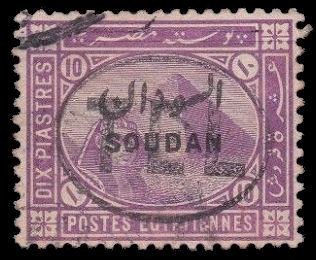
Neatness is not something easily quantified, but the cancel can give you a hint. The rest I agree with.
Compare this to the other examples. The Soudan overprint looks genuine though.
Image of 10p with forged 'TEL', courtesy of Armen on eBay.
| H4 |
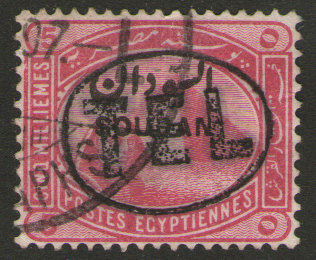
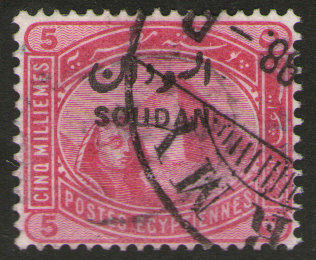
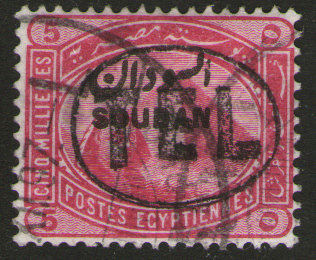 | ||
| H5 | 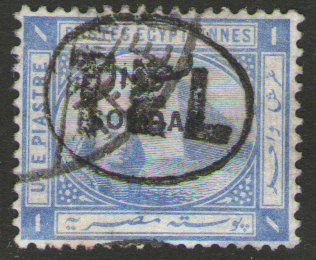 | ||
| H6 | 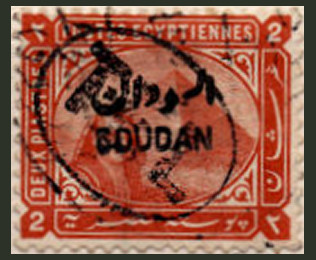
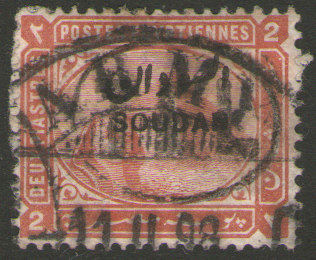
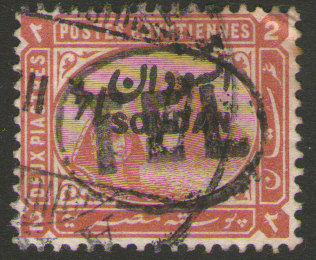 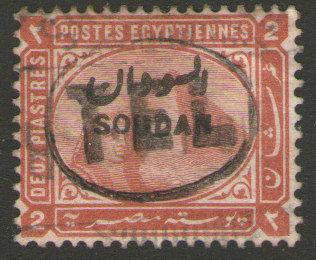
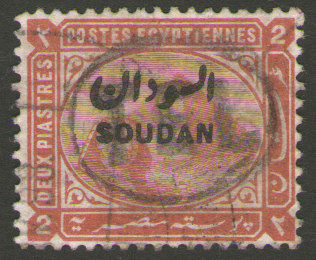 |
||
| H7 | >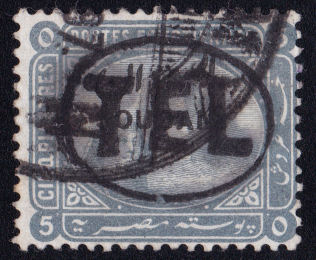
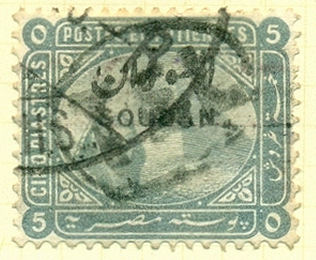 |
||
| H9 | 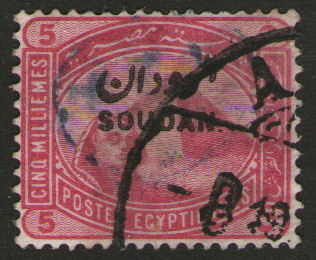
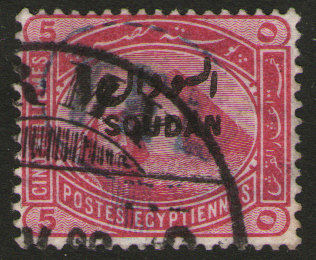
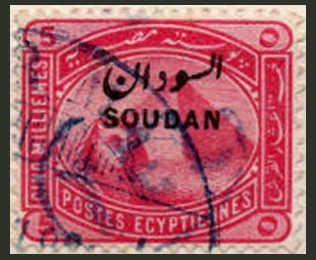 |
||
| H10 & H11 |
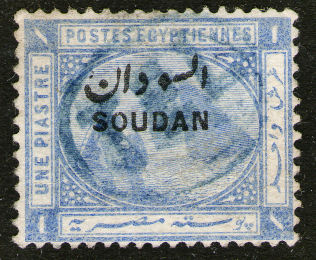 |
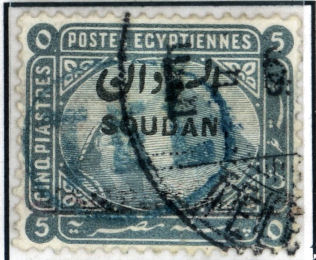 Courtesy of Mark Gibson. |
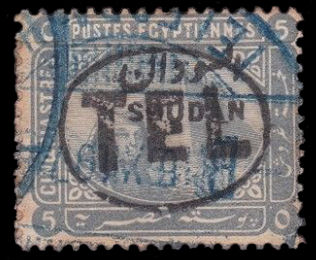 5p with blue cancel, courtesy of Armen on eBay. |
An unused selection, courtesy Spink and Son.
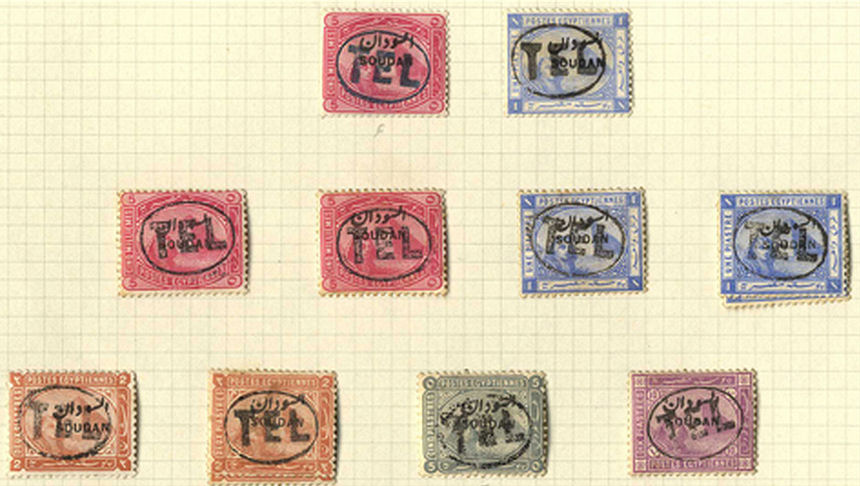
Special Military Telegraph stamps were provided 1 March 1898 with central perforation for easy bisection.
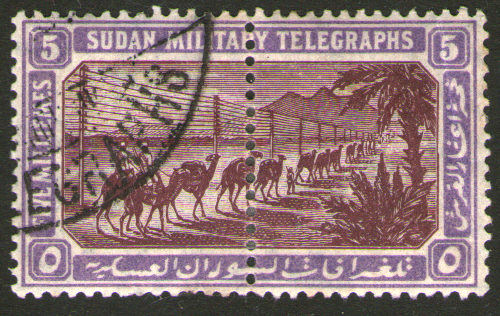 |
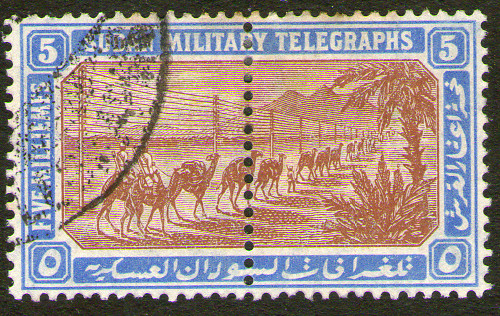 |
| Sudan-H18 | Sudan-H19 |
| - | |
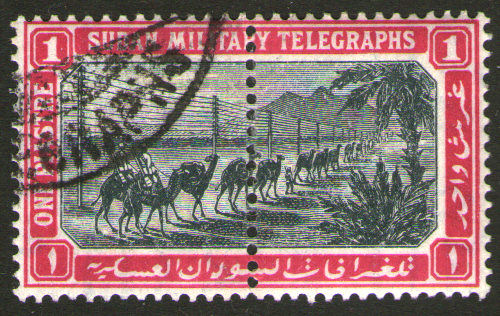 |
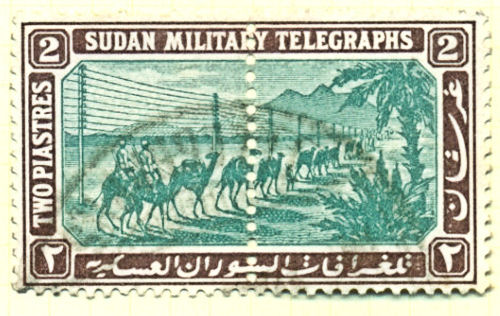 |
| Sudan-H20 | Sudan-H21 |
| - | |
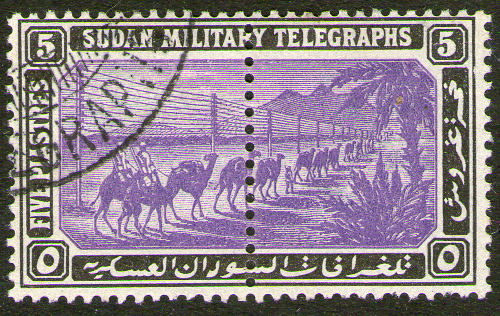 |
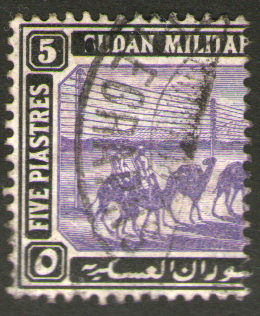
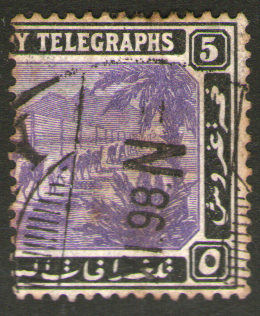 |
| Sudan-H22 | Sudan-H22 separately used halves |
| - | |
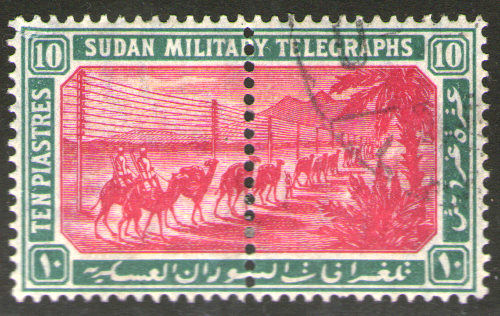 |
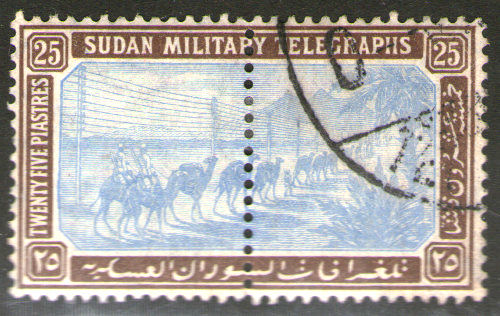 |
| Sudan-H23 | Sudan-H24 |
These exist with 3 watermarks,
| Initially (1 March 1898) the 'rosette' for 5m, 1p, 2p and 5p values (Hiscocks 13-16). |
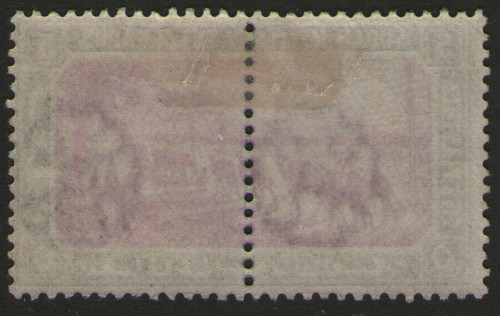 |
| Followed by the Egyptian Star and Crescent (as used on the pyramid and sphinx series) June 1898, only used for the 10p value (Hiscocks 17, scarce). |
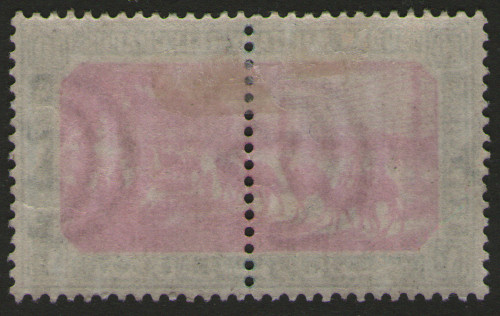 |
| Lastly (Sept 1898 for 10p, 1899 for the rest) by the Sudanese Star and Crescent for the 5m, 1p, 2p (scarce), 5p, 10p and 25p (Hiscocks 18-24). |
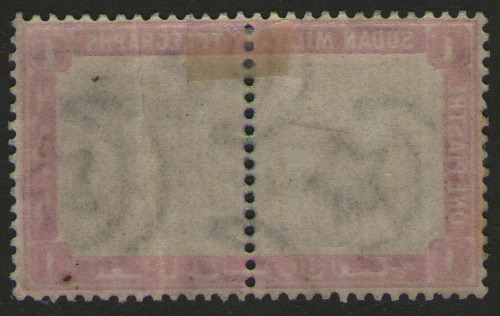 |
I have to say that given the presumed importance of cancelling both halves, I wonder why so many have only half cancelled.
| Hisc. | Description | Mint | Whole Used | Half Used |
|---|---|---|---|---|
| H13 | 5 mil lilac-brown and violet | 15.00 | 15.00 | 3.75 |
| H14 | 1 pias black and red | 15.00 | 15.00 | 3.75 |
| H15 | 2 pias green and lilac-brown | 15.00 | 15.00 | 3.75 |
| H16 | 5 pias violet and black | 10.00 | 15.00 | 3.75 |
| Hisc. | Description | Mint | Whole Used | Half Used |
|---|---|---|---|---|
| H17 | 10 pias rose and green | 40.00 | 100.00 | 25.00 |
I have reduced the mint price on these due to several recent finds of mint blocks and a sheet.
| Hisc. | Description | Mint | Whole Used | Half Used |
|---|---|---|---|---|
| H18 | 5 mil lilac-brown and violet | 5.00 | 5.00 | 1.50 |
| H19 | 5 mil brown and pale blue | 7.50 | 10.0 | 2.00 |
| H20 | 1 pias black and red | 5.00 | 5.00 | 1.50 |
| H21 | 2 pias green and lilac-brown | 38.00 | 40.00 | 6.00 |
| H22 | 5 pias violet and black | 5.00 | 5.00 | 1.50 |
| H23 | 10 pias rose and green | 7.50 | 7.50 | 1.50 |
| H24 | 25 pias pale blue and brown | 8.00 | 8.00 | 2.00 |
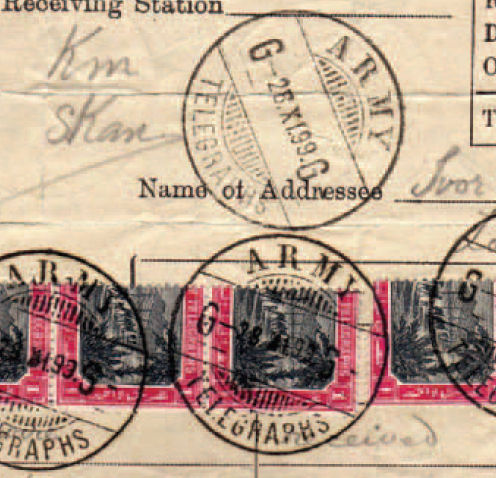 |
| G- 28.XI.99. G- unknown location with a total of 134 half-stamps. (Source: Andrew Higson) |
A Sudan Telegraphs Form No. 1 Receipt dated 25th May 1900 to Omdurman.
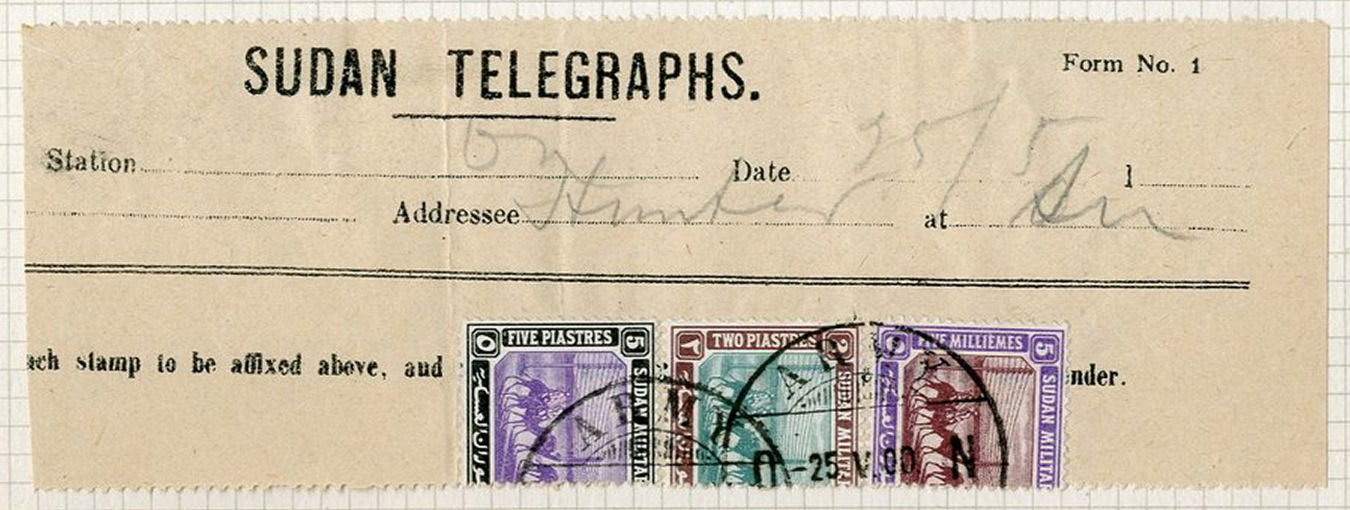
Ex Andrew Higson, courtesy of Spink & Son.
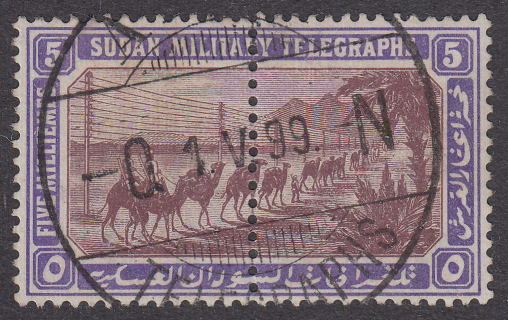 |
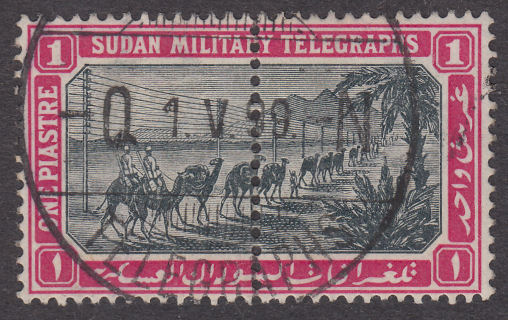 |
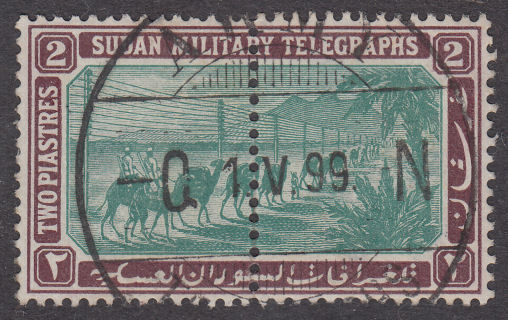 |
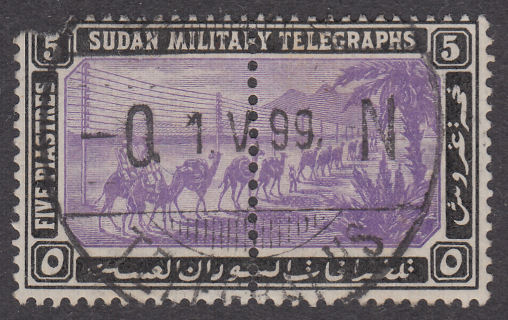 |
| This is -Q -N which could easily be confused with O -N of Omdurman. I have not heard of it before. I recently got the (rosette wmk.) set of these all together in an eBay lot. They all have the same date so were probably 'by favour'. |
|
Most of the examples that I show here are cancelled by the British Army and are taken from the Army-2 page.
Sudan had their own cancels for Sudanese Army and civilian use.
Most of these were CDS cancels similar to the British Army, but with Arabic inscriptions.
There are also more ornate examples.
 |
| Kassala cancel courtesy of Ken Doig. |
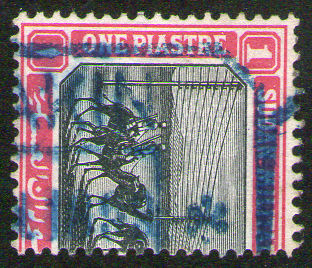 |
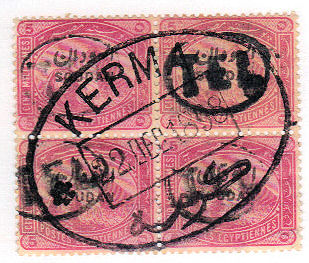 |
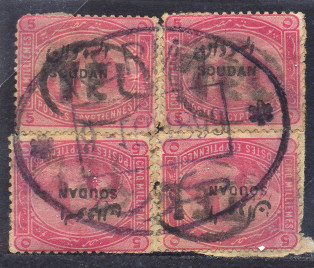 |
| Part of Suakin cancel 1899. | Kerma cancel 22 DEC 1898. Courtesy Ken Doig. | Kerma cancel 9 FEB 1899. Courtesy Rolf Lamprecht. |
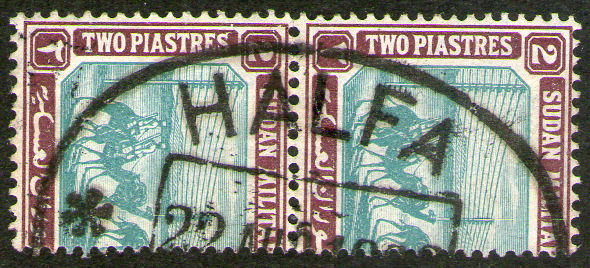 |
| Part of Halfa cancel. |
A Sudan Military Telegram Receipt dated 19th November 1899 to Berber.
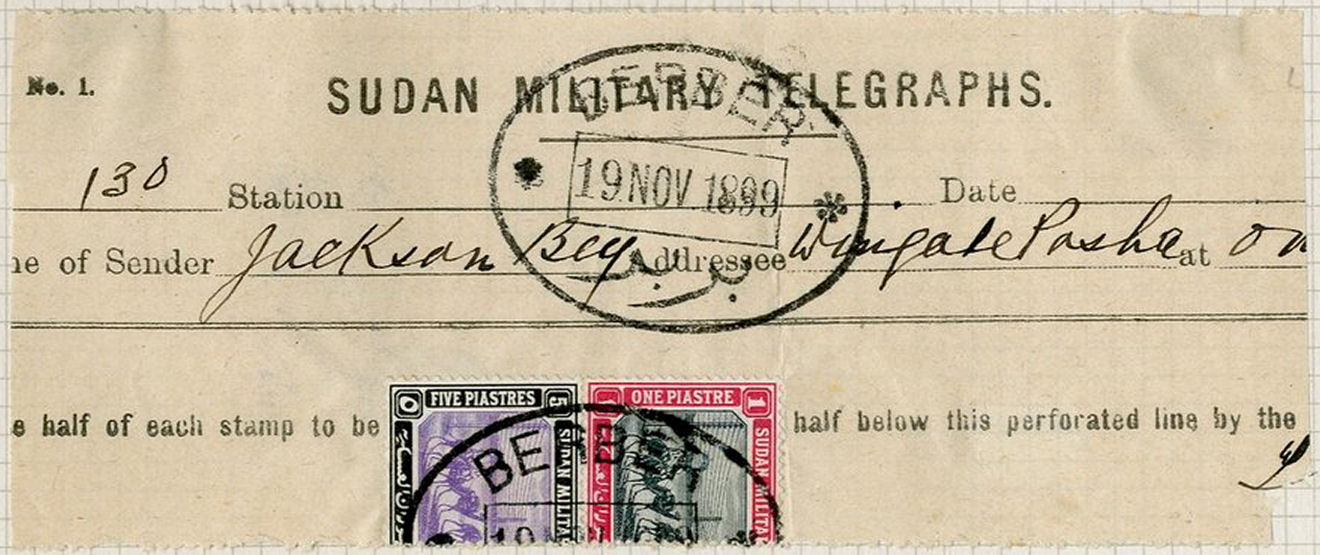
Ex Andrew Higson, courtesy of Spink & Son.
A Sudan Government Telegraphs Form T. No. 1 / 1929. dated 5th May 1931 used at Malakal Radio.
This has a printers imprint of "—McCorquodale & Co., Ltd.—64,000 Pads, 8/29."
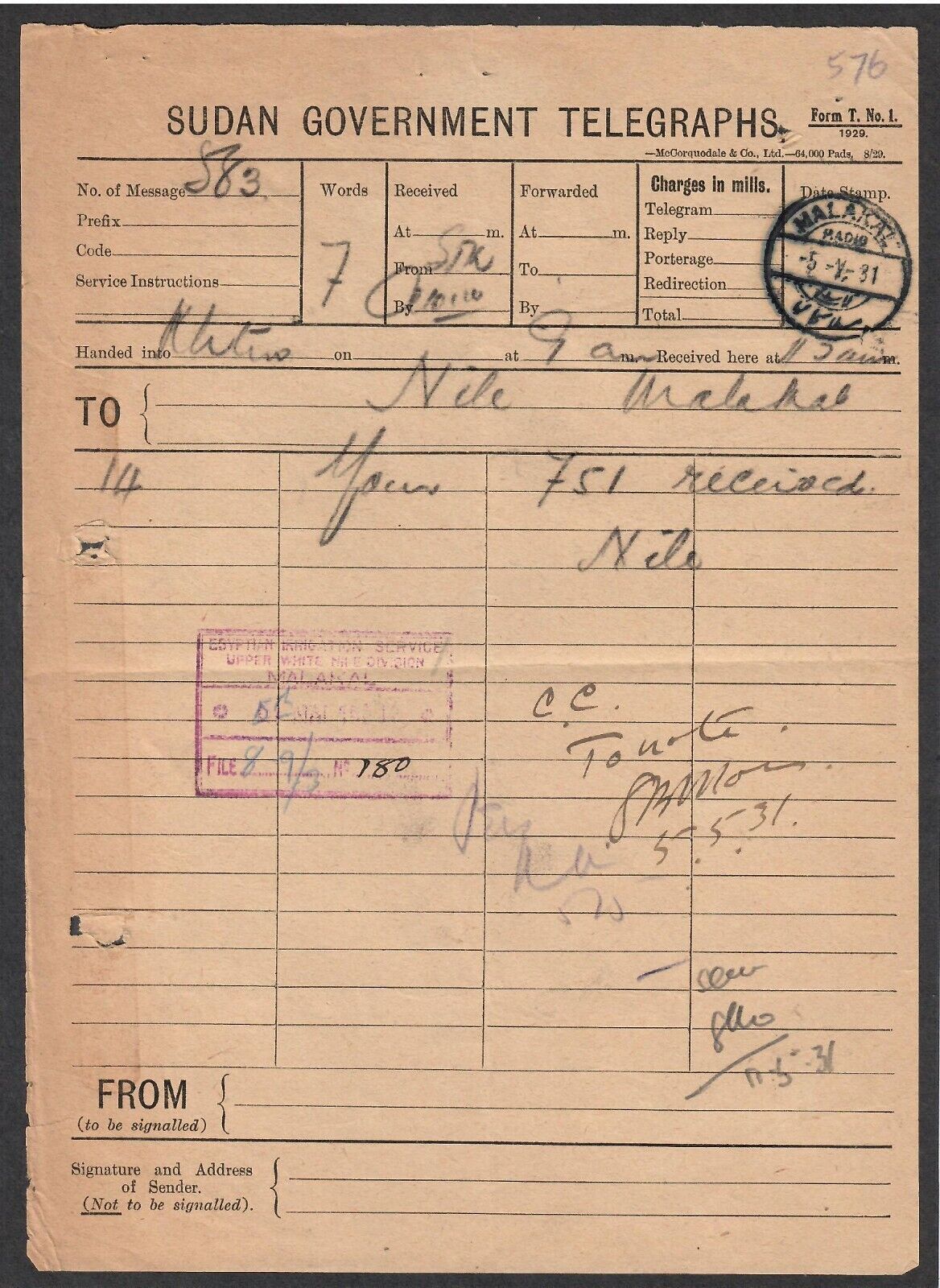
This was used to provide a receipt. Image courtesy of GV PHILATELIAN on eBay (click image for listing).
Last updated 26th. August 2023
©Copyright Steve Panting 2012/13/14/15/16/17/18/19/20/21/22/23 except where stated.
Permission is hereby granted to copy material for which the copyright is owned by myself, on condition that any data is not altered and this website is given credit.